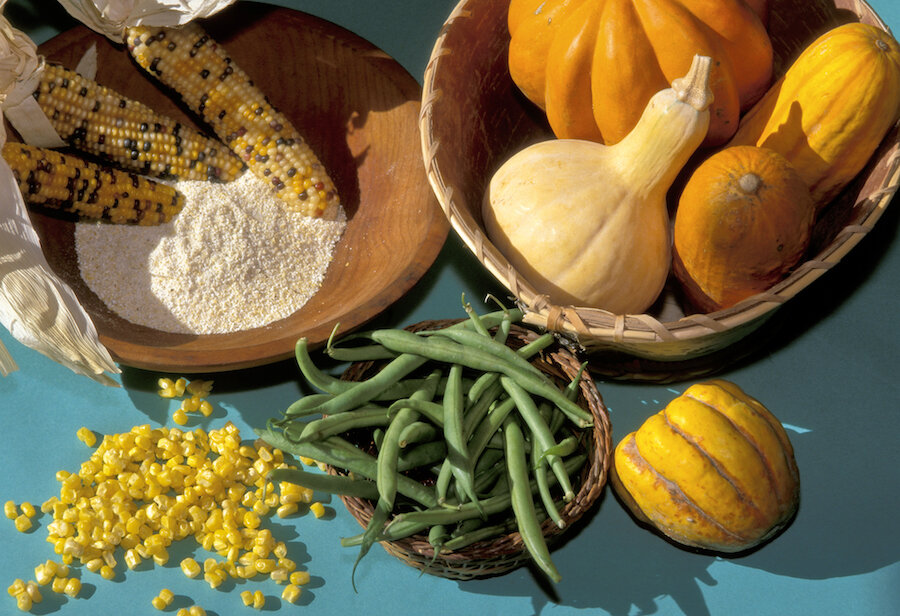Indigenous Food Sovereignty
What is Indigenous food sovereignty? Why is it important to both Indigenous and Settler peoples in Canada?
For Indigenous peoples, land, water and food make up the essence of what it means to be Indigenous. Indigenous peoples’ relationship to their food and the land and waters from which it comes from has been skewed since the time of first contact. Lands and food are at the core of what it means to be Indigenous. “Indigenous food systems include all of the land, soil, water, and air, as well as culturally important plant, fungi, and animal species that have sustained Indigenous peoples over thousands of years of participating in the natural world,” (Food Secure Canada, 2013). Indigenous food sovereignty is important because Indigenous foods are the natural foods, and they are gifts from Creator that will always grow best according to the place they are based on. Foods and food systems that are Indigenous to a place thrive and are most sustainable as a food resource where they are originally from. We are what we eat, but we are also where we eat as people who are Indigenous to this place.
For many Indigenous peoples in Canada, their connection to food has been severed in the time between contact and present day. The five white gifts are five ingredients which were distributed to Indigenous communities in ration boxes in the 1940’s (Indigenous Diabetes Health Circle, n.d.). The five white gifts consist of milk, salt, white flour, lard, and sugar. These foods have become staples in many people’s households to this day. These ingredients are known to increase blood pressure, blood sugar, and can lead to high rates of obesity, diabetes, cancer, and heart disease, which are growing rapidly in Indigenous communities across Canada.
Indigenous food sovereignty is the act of going back to our roots as Indigenous peoples and using the knowledge and wisdom of our people that they used when they were in charge of their own survival. Food sovereignty highlights our innate ability to be in charge of our food system. This includes the ability to define one’s own food sources and processes, such as the decision to hunt, trap, fish, gather, harvest, grow and eat based on Indigenous culture and ways of life. Food is sacred, and a gift of life from Creator. The inherent right to food sovereignty is reciprocal, thus demanding us as humans to nurture our interdependent relationships with the land, plants, and animals that give their lives for our sustenance (Working Group on Indigenous Food Sovereignty, 2010).
Practicing Indigenous food sovereignty and being sovereign from colonial influences is a form of resistance. Hunting, fishing, gathering and cultivating practices shaped, supported and sustained distinct Indigenous cultures, economies and ecosystems (Morrison, 2011). Using our traditional foods and food systems brings us a step closer to maintaining the balance between us as Indigenous peoples and the natural world that surrounds us. Foods will always thrive and be the most sustainable in the place where it is originally from; the same goes for people. Eating place-based foods as Indigenous people who are also Indigenous to this place will result in people thriving biologically, and will reduce the impacts of nutritional colonization and its effects, such as diabetes and heart disease, as well as many other nutrition-related illnesses.
References
Food Secure Canada. (2013). Indigenous Food Sovereignty. Retrieved from
https://foodsecurecanada.org/resources-news/newsletters/1-indigenous-food-sovereignty?gclid=Cj0KCQiAvc_xBRCYARIsAC5QT9m6GUzfaKmhXIVn1BQ3jspmon7e4KDDpa7JR4FUXTZQMlX8pbVohyQaAnfrEALw_wcB
Indigenous Diabetes Health Circle. (n.d.). The Five "White Gifts". Retrieved from
https://idhc.life/wp-content/uploads/2018/05/5-White-Gifts.pdf
Mohawk, J. (2008). From the First to the Last Bite: Learning from the Food Knowledge of Our
Ancestors. In M. Nelson [Ed.] Original Instructions: Indigenous Teachings for a Sustainable World. Rochester VM: Bear & Company. pp 170-179
Morrison, D. (2011). Indigenous Food Sovereignty: A Model for Social Learning. In H.
Wittman, A. Desmarais & N. Wiebe (Eds.). Food Sovereignty in Canada: Creating Just and Sustainable Food Systems. Halifax, NS: Fernwood Publishing. pp 97-113
People’s Food Policy Project. (2010). Discussion Paper #1: Indigenous Food Sovereignty.
Retrieved from https://foodsecurecanada.org/sites/foodsecurecanada.org/files/DP1_Indigenous_Food_Sovereignty.pdf
Working Group on Indigenous Food Sovereignty. (2010). Indigenous Food
Sovereignty. Retrieved from https://www.indigenousfoodsystems.org/food-sovereignty

